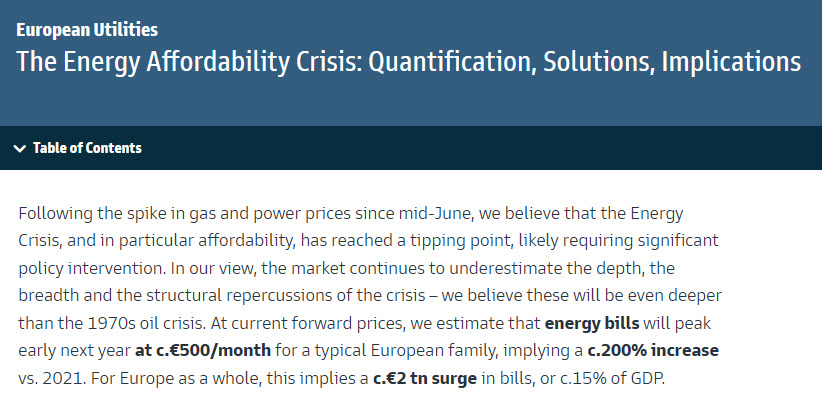The Euro is now worth less than the U.S. dollar: Euro falls below 99 cents after Russia stops gas supplies to Europe

In July, we wrote about the regulatory challenges faced by some European tech startups. The situation was so dire that one in three European startups is now considering launching their business elsewhere due to the scale of the compliance burden.
But the regulatory burden is probably the least of their worries as European companies, small and large, battle with soaring energy prices. Europe is now tethering on the brink of financial collapse after Russian energy supplier Gazprom announced on Friday it will stop the supply of gas to Europe. Gazprom said critical gas flows to Europe won’t resume until all sanctions are lifted.
For the first time in two decades, the Euro, the common currency of the eurozone, was trading around 0.9911 versus the dollar by 10:00 a.m. London time (5:00 a.m. ET), having climbed off lows of $0.9881 hit earlier in the day. The Euro is now trading at $0.99 as of the time of writing.

The situation is so severe that the European Commission is “preparing proposals to help vulnerable households and businesses to cope with high energy prices.” In a tweet earlier today, the President of the EU Commission Van Der Leyen said:
“Putin is using energy as a weapon by cutting supply and manipulating our energy markets. He will fail. Europe will prevail. The @EU_Commission is preparing proposals to help vulnerable households and businesses to cope with high energy prices.”
Putin is using energy as a weapon by cutting supply and manipulating our energy markets.
He will fail.
Europe will prevail.
The @EU_Commission is preparing proposals to help vulnerable households and businesses to cope with high energy prices.
— Ursula von der Leyen (@vonderleyen) September 5, 2022
Some analysts are saying Euro’s fall is far from over, there’s a possibility it could fall even further. George Saravelos, Global Head of FX Research at Deutsche suggested that “safe-haven” moves towards the U.S. dollar could become “even more extreme” as the U.S. enters a technical recession, thereby putting more downward pressure on the EURUSD trade. Saravelos said:
“We conclude that a move down to 0.95-0.97 in EUR/USD would match the all-time extremes seen in exchange rates and USD risk premium since the end of Bretton Woods.”
Other analysts attributed the decline to a number of macro events including fears of a recession and rising uncertainty about energy supply to the bloc caused by sanctions on Russia.
So, what does all this mean for European tech startups? Typically, a cheap Euro helps European businesses. But high energy prices are making it difficult for some startup companies to keep their business in operation. to stay afloat. The rate fluctuation and volatility could also hamper their effort to plan for the future.
Meanwhile, Europe’s energy crisis will probably get worse before it gets better. Below is how Goldman Sachs Investment Research sums up the situation:
“At current forward prices, we estimate that energy bills will peak early next year at c.€500/month for a typical European family, implying c.200% increase vs. 2021. For Europe as a whole, this implies a c.€2 TRILLION surge in energy bills, or c.15% of GDP”





